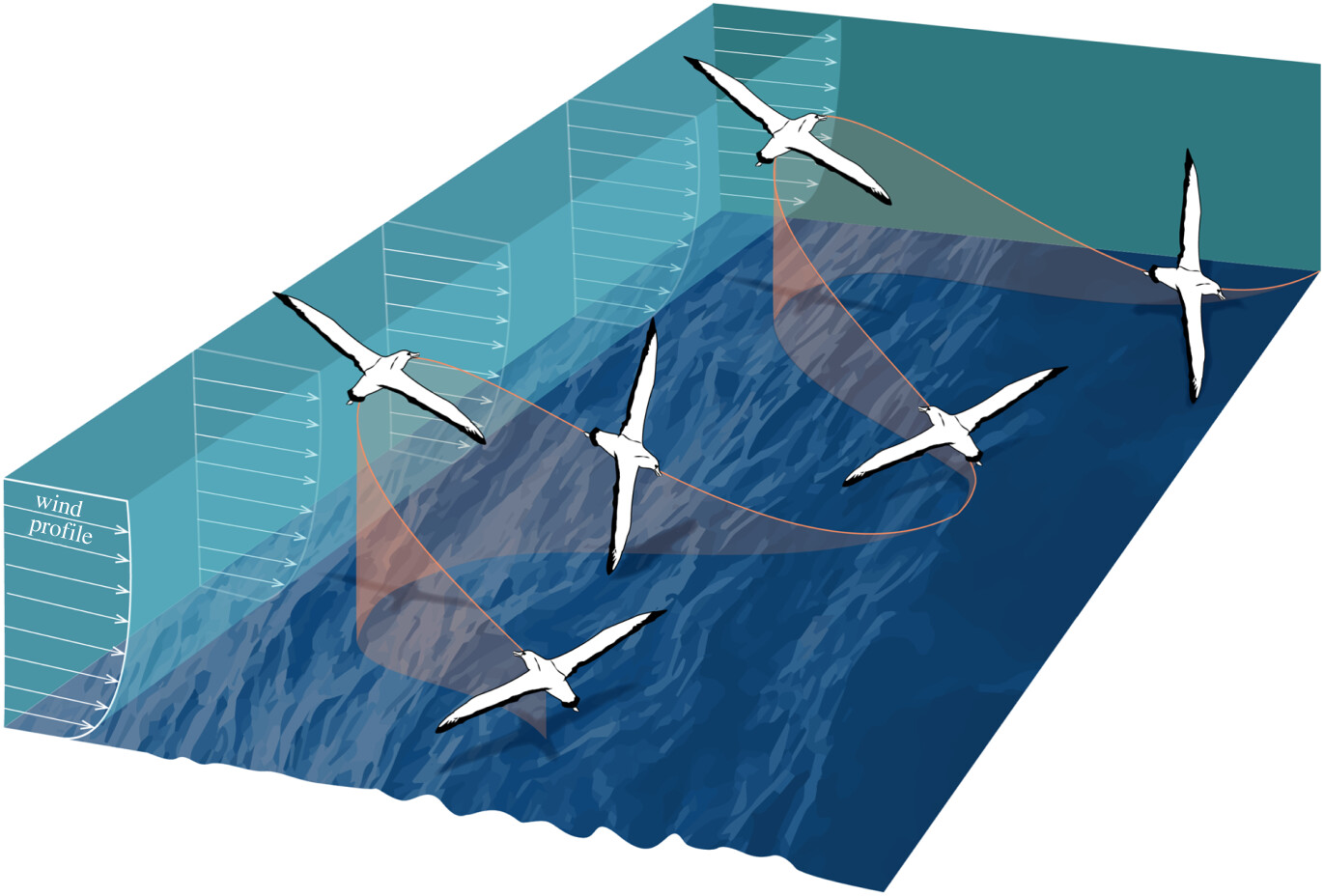 Figure 1. Schematic of a wandering albatross flying in an across-wind direction using an S-shaped dynamic soaring manoeuvre consisting of a series of upwind and downwind turns through the boundary layer (redrawn after Sachs [6]). The bird extracts mechanical energy from the wind by climbing headed upwind and descending headed downwind. Wave heights are typically large in the Southern Ocean. Wind–wave interactions cause a more complicated instantaneous wind field than the average shown here, and waves themselves induce updrafts. Albatrosses appear to efficiently exploit these fine-scale variations in wind velocity, making modelling their flight challenging.
Figure 1. Schematic of a wandering albatross flying in an across-wind direction using an S-shaped dynamic soaring manoeuvre consisting of a series of upwind and downwind turns through the boundary layer (redrawn after Sachs [6]). The bird extracts mechanical energy from the wind by climbing headed upwind and descending headed downwind. Wave heights are typically large in the Southern Ocean. Wind–wave interactions cause a more complicated instantaneous wind field than the average shown here, and waves themselves induce updrafts. Albatrosses appear to efficiently exploit these fine-scale variations in wind velocity, making modelling their flight challenging.
Philip Richardson (Department of Physical Oceanography, Woods Hole Oceanographic Institution, USA) and Ewan Wakefield have published open access in the journal Royal Society Open Science an analysis of the wandering albatrosses’ utilisation of dynamic soaring using GPS tracking data and model simulations.
The paper’s abstract follows:
Wandering albatrosses exploit wind shear by dynamic soaring (DS), enabling rapid, efficient, long-range flight. We compared the ability of a theoretical nonlinear DS model and a linear empirical model to explain the observed variation of mean across-wind airspeeds of GPS-tracked wandering albatrosses. Assuming a flight trajectory of linked, 137° turns, a DS cycle of 10 s and a cruise airspeed of 16 m s−1, the theoretical model predicted that the minimum wind speed necessary to support DS is greater than 3 m s−1. Despite this, tracked albatrosses were observed in flight at wind speeds as low as 2 m s−1. We hypothesize at these very low wind speeds, wandering albatrosses fly by obtaining additional energy from updrafts over water waves. In fast winds (greater than 8 m s−1), assuming the same 10 s cycle period and a turn angle (TA) of 90°, the DS model predicts mean across-wind airspeeds of up to around 50 m s−1. In contrast, the maximum observed across-wind mean airspeed of our tracked albatrosses reached an asymptote at approximately 20 m s−1. We hypothesize that this is due to birds actively limiting airspeed by making fine-scale adjustments to TAs and soaring heights in order to limit aerodynamic force on their wings.
An article explaining the paper’s findings has been released by Woods Hole Oceanographic Institution (WHOI) on their website.
Reference:
Richardson P.L. and Wakefield E.D. 2022 Observations and models of across-wind flight speed of the wandering albatross Royal Society Open Science. 9211364211364 http://doi.org/10.1098/rsos.211364
12 December 2022

 Español
Español  English
English  Français
Français